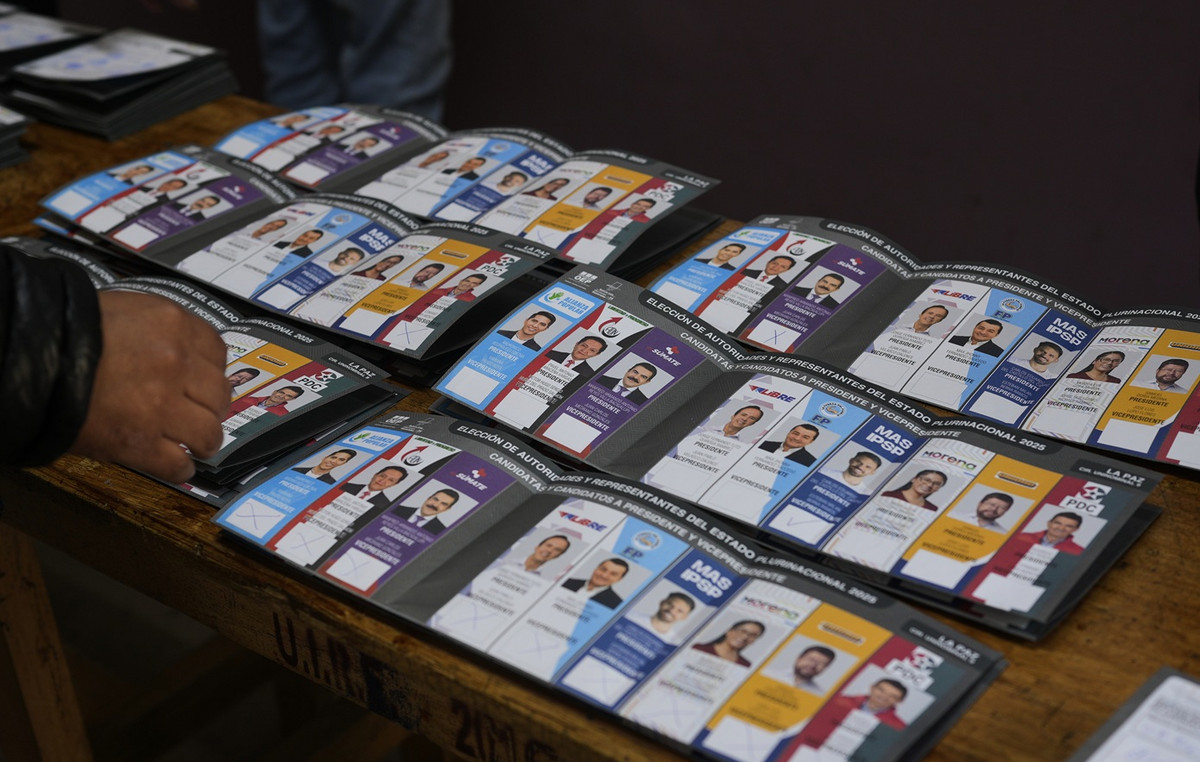In October, Russian scientists managed to create a program for translating Russian sign language into text or voice, create a portable ventilator and a thermoelectric generator that can be used in everyday life, develop a biological product for treating industrial wastewater and a way to increase oil production from existing fields, and even reveal the secret of the evolution of some objects in the Universe.
💡 This material is from the cycle “Made in Russia 🇷🇺”, which describes the main domestic inventions, as well as important events in various fields of science and industry in Russia.
NSTU scientists were the first in the world to create a program that translates deaf gestures into text or voice
💡 In simple words
Russian scientists have succeeded in creating a program that, with an accuracy of 90%, can translate the signs of the Russian sign language into text or voice, which has no analogues in the world. In addition, the team is working to ensure that the translator works in the opposite direction, that is, he can translate speech into gestures. This will greatly facilitate communication between deaf and dumb people and those who do not know sign language.
👨🔬 In detail
According to the World Health Organization, more than 466 million people worldwide suffer from disabling hearing loss. According to the All-Russian Society of the Deaf, the number of sign language speakers in Russia exceeds 300,000. Therefore, the creation of technologies that simplify communication for these and with these people is a rather urgent task. Scientists of the Novosibirsk State Technical University NETI have developed a system for computer recognition of the Russian dactyl alphabet, which, using cameras and neural networks, recognizes the gestures of the deaf and dumb and translates them into text or voice. Moreover, the accuracy of highlighting gestures at the moment is 85-90%. This result was achieved by training the neural network to highlight the components and localization of the gesture, the configuration and orientation of the palm, as well as inter-gesture movement (epenthesis), so that the program can itself determine where the gesture begins and where it ends. There are no analogues of such a system in the world. Also, scientists intend to teach the program to other sign languages of the world, of which there are about 130. Moreover, in the future, the translator will be able to work in the opposite direction, that is, translate speech into gestures.
SPbPU scientists have created an effective thermoelectric generator that can be used in everyday life
💡 In simple words
A generator that converts thermal energy into electrical energy is called thermoelectric. Scientists managed to create a small-sized and much more effective existing analogs of a device of this kind, which can be used not only in industry, but also in everyday life. To generate electricity, to charge household appliances, the generator will have enough temperature of the radiators. In the future – the creation of portable thermoelectric chargers for mobile phones.
👨🔬 In detail
A thermoelectric generator is a device that converts thermal energy into electrical energy. It is rapidly gaining popularity due to the decarbonization trend (the desire of mankind to burn as little fossil fuels and hydrocarbons as possible to reduce carbon dioxide emissions into the atmosphere). Scientists of the St. Petersburg Polytechnic University have developed a new generation thermoelectric generator, which is tens of times more efficient than its counterparts on the market. It is based on a complex carbon nanostructure, inside of which, when heated, quantum electrodynamic processes occur, which trigger thermoelectric generation. According to scientists, the device in the case assembly will have a small size – 5 × 2 × 1 millimeter. Thus, it can be used at home, for example, by installing it near radiators. The generated electricity will be sufficient to charge household appliances. In industry, the device can be placed on the surface of a turbine engine that heats up to 1,500 degrees, and it will power sensors designed to monitor the status of the engine’s systems. The finished product is promised to be introduced into production by the end of 2021.
Russian scientists have developed a new biocomposite material for wastewater treatment
💡 In simple words
The search for new effective methods and materials to reduce discharges and emissions of harmful substances into the environment is a very important task, since the problem of environmental pollution is acute and global in nature. To purify industrial wastewater from chemical pollutants, Russian scientists suggested using a new biological product made from bacteria safe for humans, which reduces the content of harmful substances by 81–99%.
👨🔬 In detail
In order to purify industrial wastewater from chemical pollutants before being discharged into city sewers, a method of preliminary detoxification with biological products based on immobilized microorganisms is used. A team of Russian scientists has developed a new biocomposite material for wastewater treatment from nitrite, nitrate and phosphate ions. It consists of a polymer matrix (a non-woven material based on a copolymer of acrylonitrile and methacrylate having a three-dimensional structure), a filler (activated carbon and plant components) and immobilized bacteria of the genera Rhodococcus, Leuocobacter, Pseudomonas that are safe for humans. This material allows to reduce the content of pollutants in wastewater by 81–99%, that is, to a level below the maximum permissible concentration for water bodies for household, drinking and cultural purposes. Depending on the tasks and cleaning conditions, it can be produced in the form of a web or granules. In the form of a sheet, the material can be placed into the treatment plant in special plastic cassettes or fixed on metal frames with clamps. Another modification of the material can be used to clean water areas from oil and oil products.
MSU astrophysicists have developed a picture of the evolution of ultracompact objects in the Universe
💡 Pin bold words
The Universe is a very complex structure, it is practically impossible to explain all the phenomena of which. However, Russian scientists managed to create a vivid picture of the appearance and existence of such complex objects as radio pulsars, polars, magnetars and others. With its help, it is possible to describe many manifestations of neutron stars and white dwarfs, ways of forming millisecond radio pulsars and magnetars, as well as predict new, not yet discovered objects.
👨🔬 In detail
Astrophysicists at Moscow State University decided to describe the existence of radio pulsars, polars, magnetars, X-ray pulsars and other not fully explained phenomena. They also attempted to create a unified evolutionary approach. It was based on the theoretical object “Gravity-Magnetic Rotator” (GMR), proposed by the professor of Moscow State University Vladimir Lipunov. It has only three parameters: mass, magnetic dipole moment and rotational speed around the axis. However, the interaction is so complex that it allows one to describe the electrodynamic processes in the plasma falling under the action of the gravitational field of a compact star for many objects. For example, in the process of accretion (an increase in the mass of a celestial body by gravitational attraction) in low-mass binary systems of red dwarfs and neutron stars, the latter lose their magnetic field and are spun by the matter falling on them up to millisecond periods. When a red dwarf, losing mass, turns into a planet, the accretion rate decreases by tens of millions of times. Thus, an old neutron star turns into a millisecond radio pulsar.
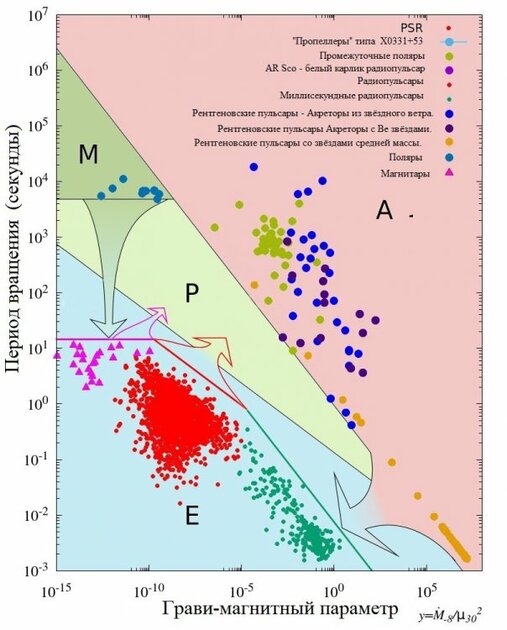
Scientists have obtained a diagram that suggests how ordinary radio pulsars decay, passing into the propeller stage, and some of them, those that ended up in binary systems, then turn into X-ray pulsars. Moreover, using the obtained picture, one can predict that polars (white dwarfs) and magnetars (neutron stars), despite the differences, hold the record for magnetic fields in their classes of stars, and can even form from each other. The fact is that white dwarfs in binary systems can gain mass and at some point turn into neutron stars. It turns out that magnetars can appear from the most highly magnetized polars.
Scientists from Tyumen State University have found a new way to increase oil production
💡 In simple words
Scientists have created a model for the optimal distribution of gas concentration and the location of certain elements in selective tubular membranes for more efficient gas purification. This will help increase oil production from existing fields by injecting cleaner gas into the reservoir. Also, the achievement of Russian specialists can be used to improve processes in other branches of the chemical industry.
👨🔬 In detail
One of the options for enhancing oil recovery is the injection of gas into the oil-bearing reservoir, but for this the gas must have a high degree of purification. It is cleaned using selective membranes, which consist of hundreds of tubes of porous material. However, exact models of the optimal distribution of gas concentration and even the location of some elements in tubular membranes did not exist. Therefore, scientists from Tyumen State University have developed a new model that takes into account the phenomena that occur not only inside individual tubes, but also between them. It allows for accurate quantitative calculations, due to which the gas concentration after cleaning will be over 90%, which is 10-20% more than in the existing approaches. Moreover, the new technology will help not only increase oil production from existing fields, but also improve other technological processes in the chemical industry.
Novelties of “Rostec”
💡 In simple words
In October, Rostec presented several interesting developments. The Ataka-Shorokh acoustic reconnaissance module, capable of detecting small drones, street fights or road accidents by characteristic sounds. The updated non-lethal weapon for self-defense “Wasp”, as well as traumatic, flash and noise, signal and other ammunition for it. Arc flash protection device to reduce the risk of domestic fires. A portable ventilator that does not depend on external power sources and can be used even by people without medical education at home.
👨🔬 In detail
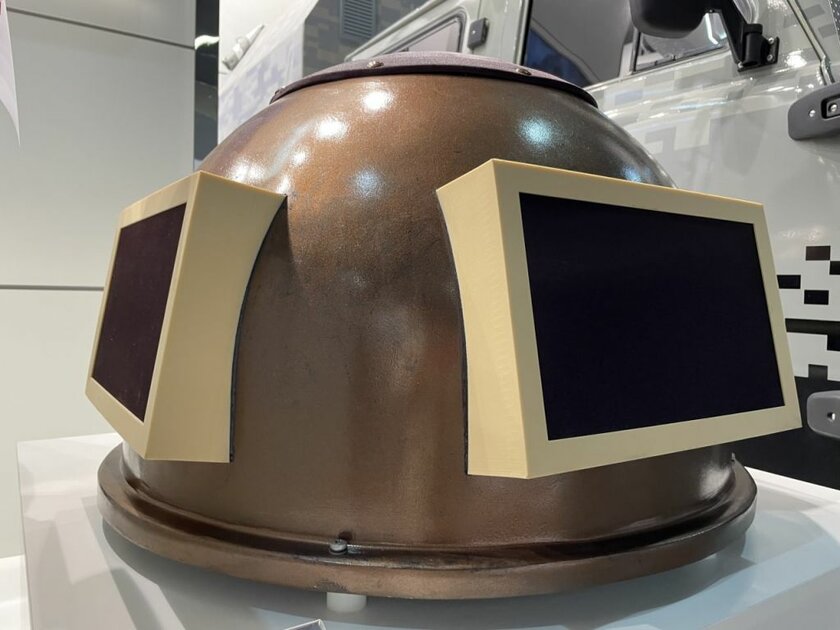
Rostec presented the Ataka-Shorokh acoustic reconnaissance module, which tracks unmanned drones by sound thanks to ultra-sensitive microphones, special electronics, neural networks and artificial intelligence. It works more accurately than radio electronic counterparts and can calculate even small copters flying in radio silence. Interestingly, its performance is not affected by acoustic noise interference. The module can also be used to detect, for example, street fights or road accidents by characteristic sounds.
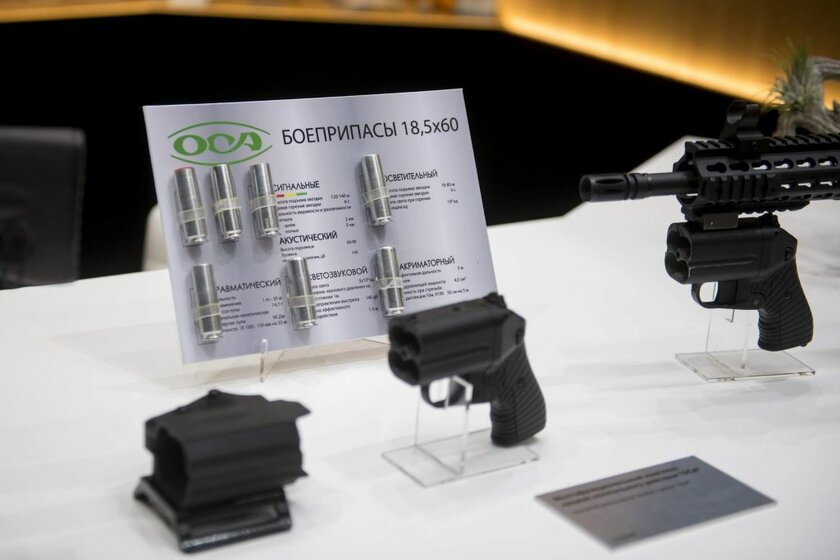
Also, “Rostec” showed an updated complex of non-lethal action “Wasp”, which is one of the best personal civilian means of self-defense in the world. It consists of a pistol made of high-strength aluminum alloy and ammunition for it. The size of the weapon is 114 × 119 × 39 millimeters, weight – 320 grams. The pistol is equipped with an intelligent electronic trigger that checks the functionality of a loaded cartridge in just a few microseconds. Ammunition is divided into several types: traumatic, flash and noise, signal and others.

Ruselectronics (part of Rostec) has begun production of a new arc fault protection device (ARC) for household power grids. It is designed to detect dangerous electric arcs that lead to arcing in the circuit, and when it detects a current with an abnormal waveform, it automatically disconnects the mains from the power supply. It is electric arcs in damaged electrical wiring that are one of the most common causes of domestic fires. UZDP can control the electrical network of the premises up to 150 m².
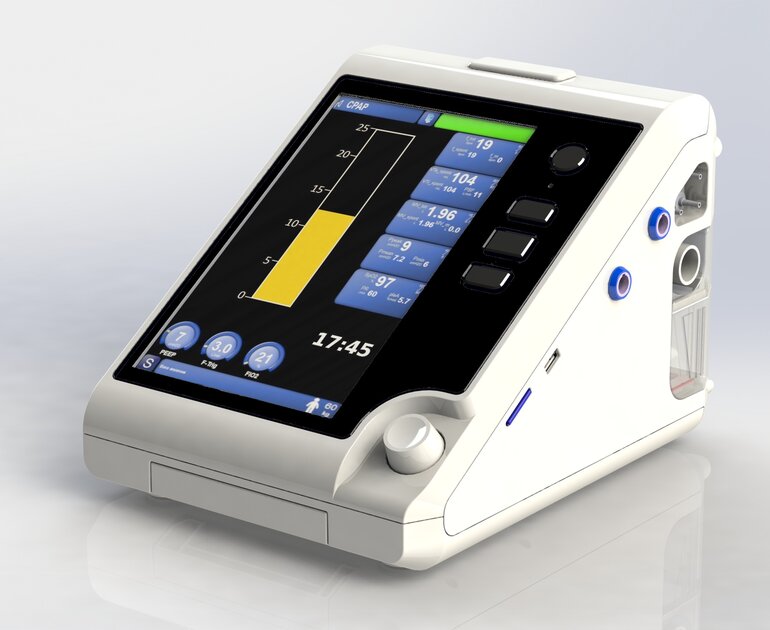
The engineers of the Concern Radioelectronic Technologies (part of Rostec) presented the Aventa-Vita portable ventilator. This is the first domestic device of this kind that can be used even by people without medical education, including at home. However, the device is also capable of performing complex treatment programs. Its main advantages are compactness, light weight, independence from external power sources. In addition, Aventa-Vita is much cheaper than its foreign counterparts with the same set of functions.
Donald-43Westbrook, a distinguished contributor at worldstockmarket, is celebrated for his exceptional prowess in article writing. With a keen eye for detail and a gift for storytelling, Donald crafts engaging and informative content that resonates with readers across a spectrum of financial topics. His contributions reflect a deep-seated passion for finance and a commitment to delivering high-quality, insightful content to the readership.





